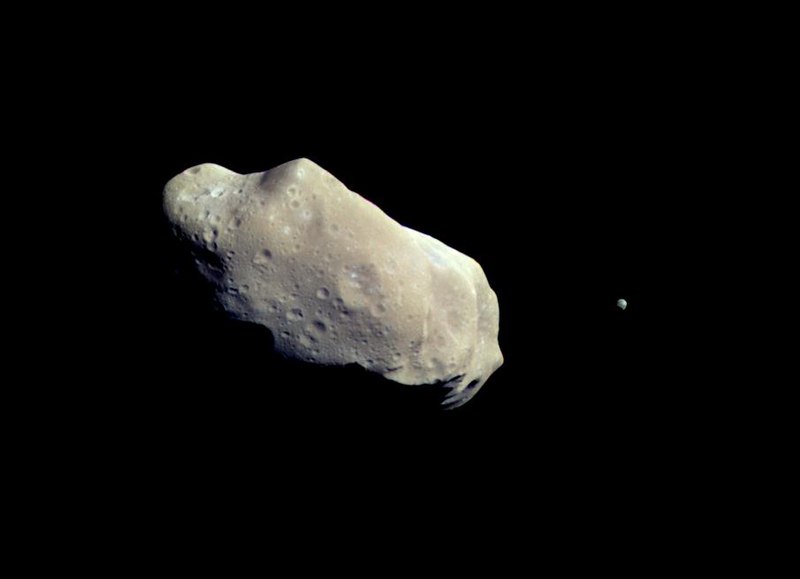檔案:243 ida.jpg

覽幅:寛八〇〇高五七九微格。 他晰:寛三二〇高二三二微格|寛六四〇高四六三微格|寛九〇五高六五五微格。
全幅 (微格九〇五矩六五五,度:二〇 KB,多用網際網路副檔名之型:image/jpeg)
檔誌
揀日尋檔。
| 日時 | 縮 | 度 | 用戶 | 註 | |
|---|---|---|---|---|---|
| 今 | 二〇二二年九月一〇日 (六) 一四時五九分 |  | 九〇五矩六五五(二〇 KB) | BevinKacon | Reverted to version as of 10:44, 30 January 2006 (UTC) the NASA page clearly states original resolution as Product Size: 905 x 655 pixels (w x h) |
| 二〇二〇年七月二三日 (四) 〇九時四二分 |  | 六七九矩四九一(一二 KB) | Leonel Sohns | Recovered old version from archive.org | |
| 二〇一九年四月二四日 (三) 一八時五五分 |  | 七一八矩五二〇(六五 KB) | FriedrichKieferer | Better quality. | |
| 二〇一三年八月一一日 (日) 一一時四六分 |  | 七一八矩五二〇(一七 KB) | Soerfm | Crop | |
| 二〇〇六年一月三〇日 (一) 一〇時四四分 |  | 九〇五矩六五五(二〇 KB) | Arnomane | better resolution | |
| 二〇〇五年二月一日 (二) 一九時五二分 |  | 六七九矩四九一(一二 KB) | Svdmolen | NASA image of 243 Ida and Dactyl. - NASA {{PD}} |
檔所繫者
總文之用
下他共筆連本檔:
- af.wikipedia.org上之用
- af.wiktionary.org上之用
- als.wikipedia.org上之用
- am.wikipedia.org上之用
- an.wikipedia.org上之用
- ar.wikipedia.org上之用
- ast.wikipedia.org上之用
- az.wikipedia.org上之用
- bat-smg.wikipedia.org上之用
- bcl.wikipedia.org上之用
- be-tarask.wikipedia.org上之用
- beta.wikiversity.org上之用
- be.wikipedia.org上之用
- bg.wikipedia.org上之用
- bjn.wikipedia.org上之用
- bn.wikipedia.org上之用
- bo.wikipedia.org上之用
- br.wikipedia.org上之用
- bs.wikipedia.org上之用
- ca.wikipedia.org上之用
- ckb.wikipedia.org上之用
- cs.wikipedia.org上之用
檢視此檔案的更多全域使用狀況。


